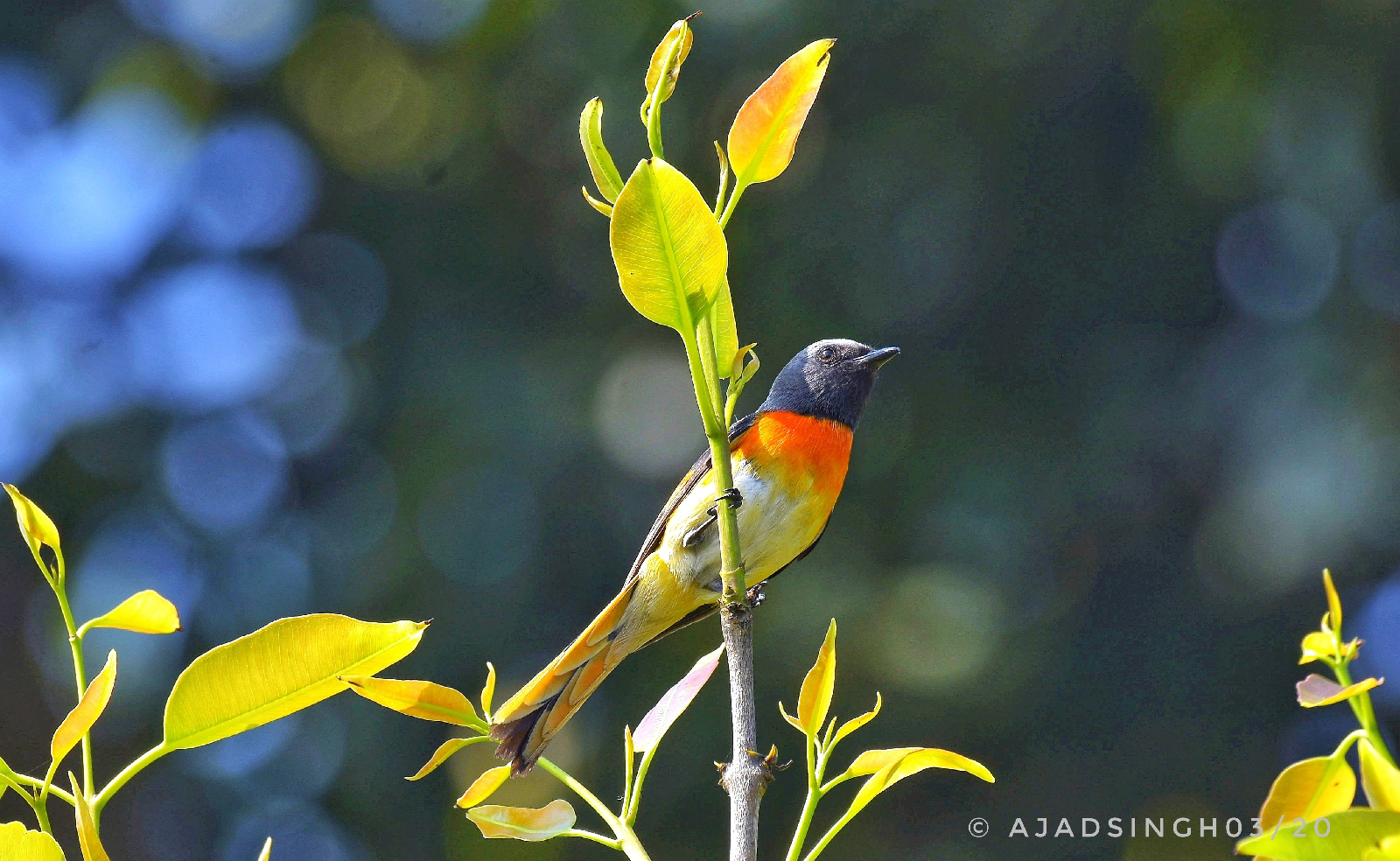Small minivit

Small minivet male (Pericrocotus cinnamomeus) सहेली,लघु विष्फुलिंग Saryuwetland Ayodhya Uttar Pradesh Nikon Gears Full screen mode recommended for details Male Female This is a small passerine bird. This minivet is found in tropical southern Asia from the Indian subcontinent east to Indonesia The small minivet is 16 cm long with a strong dark beak and long wings. The male differs from most other common minivets by having grey, not glossy black, upperparts and head, and orange underparts, fading to yellow on the belly, orange tail edges, rump and wing patches. The female is grey above, with yellow underparts (including the face), tail edges, rump and wing patches.







